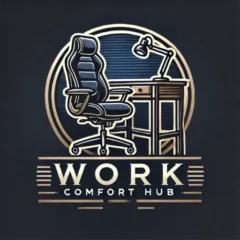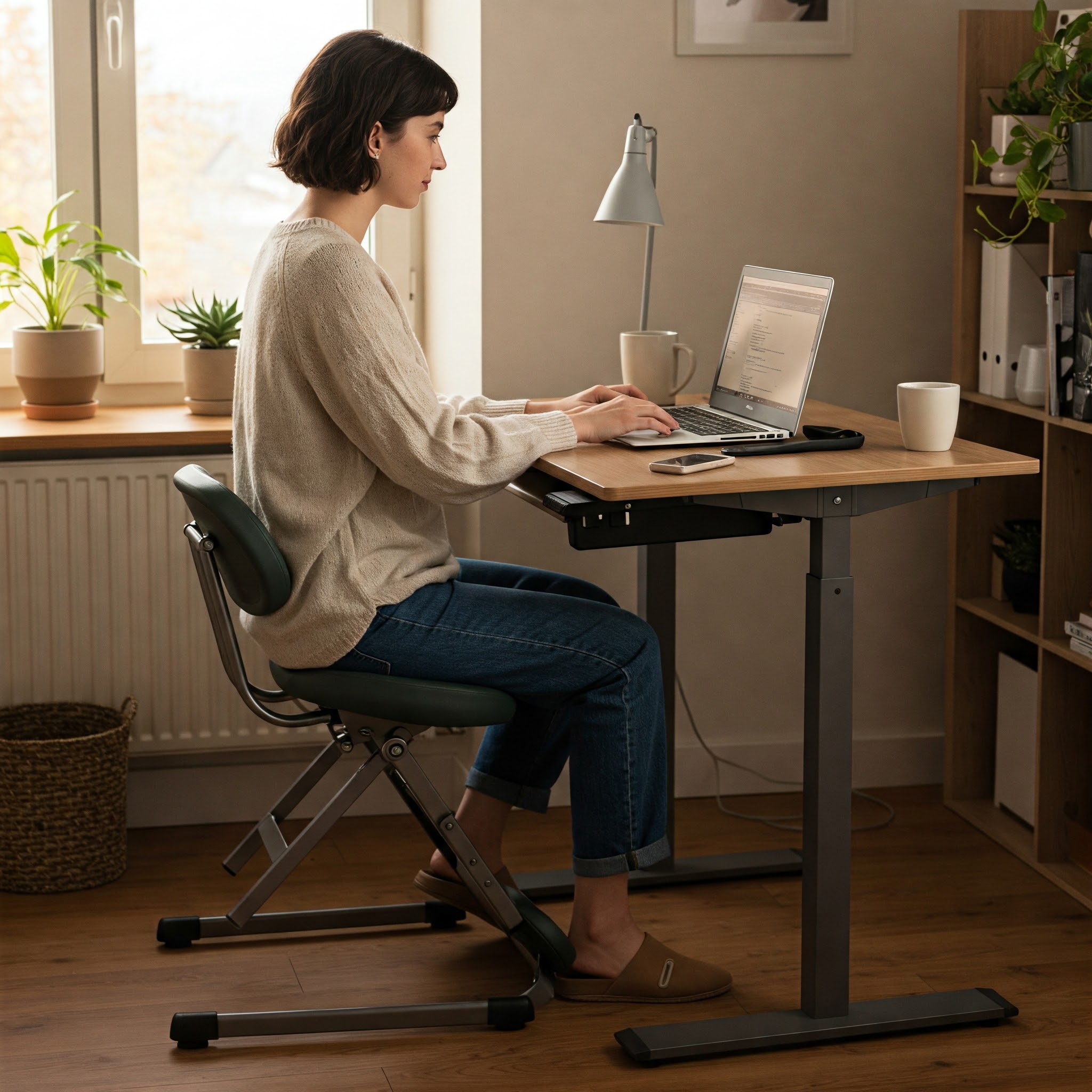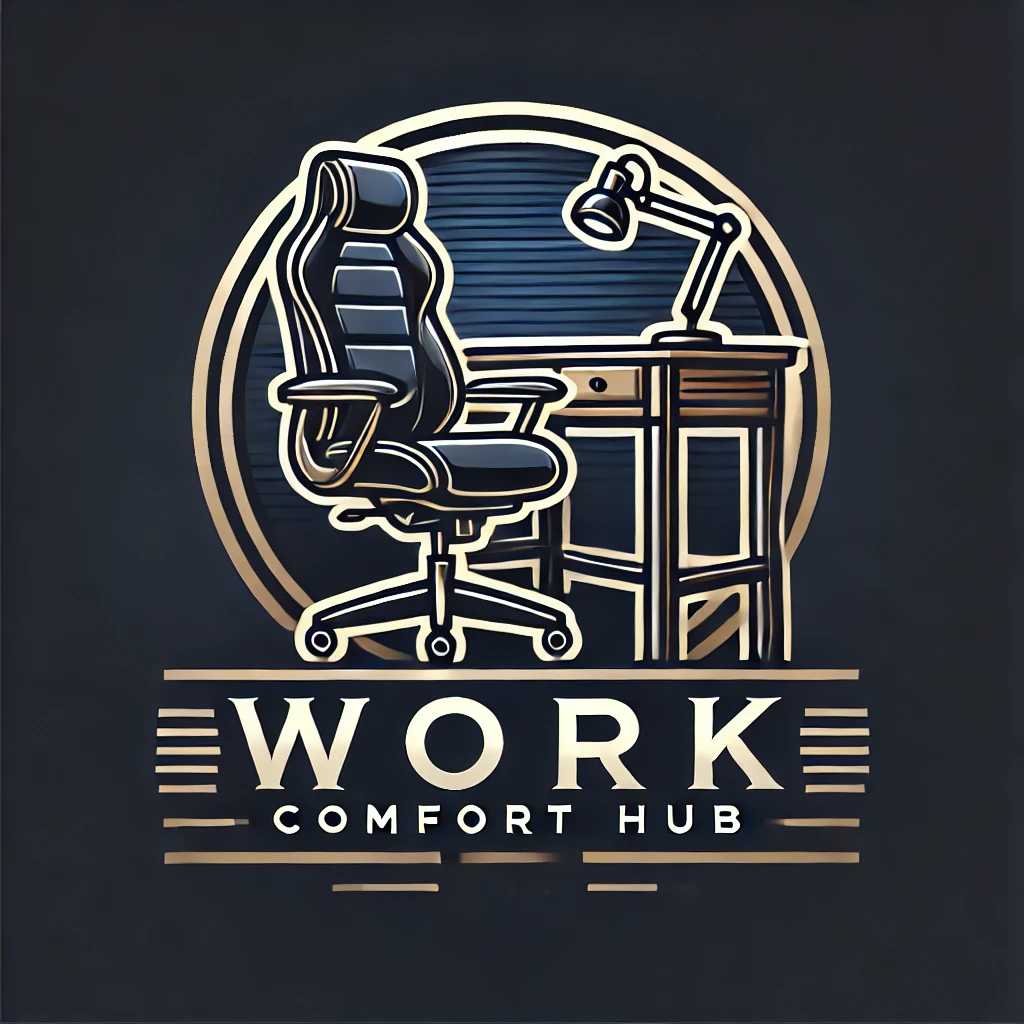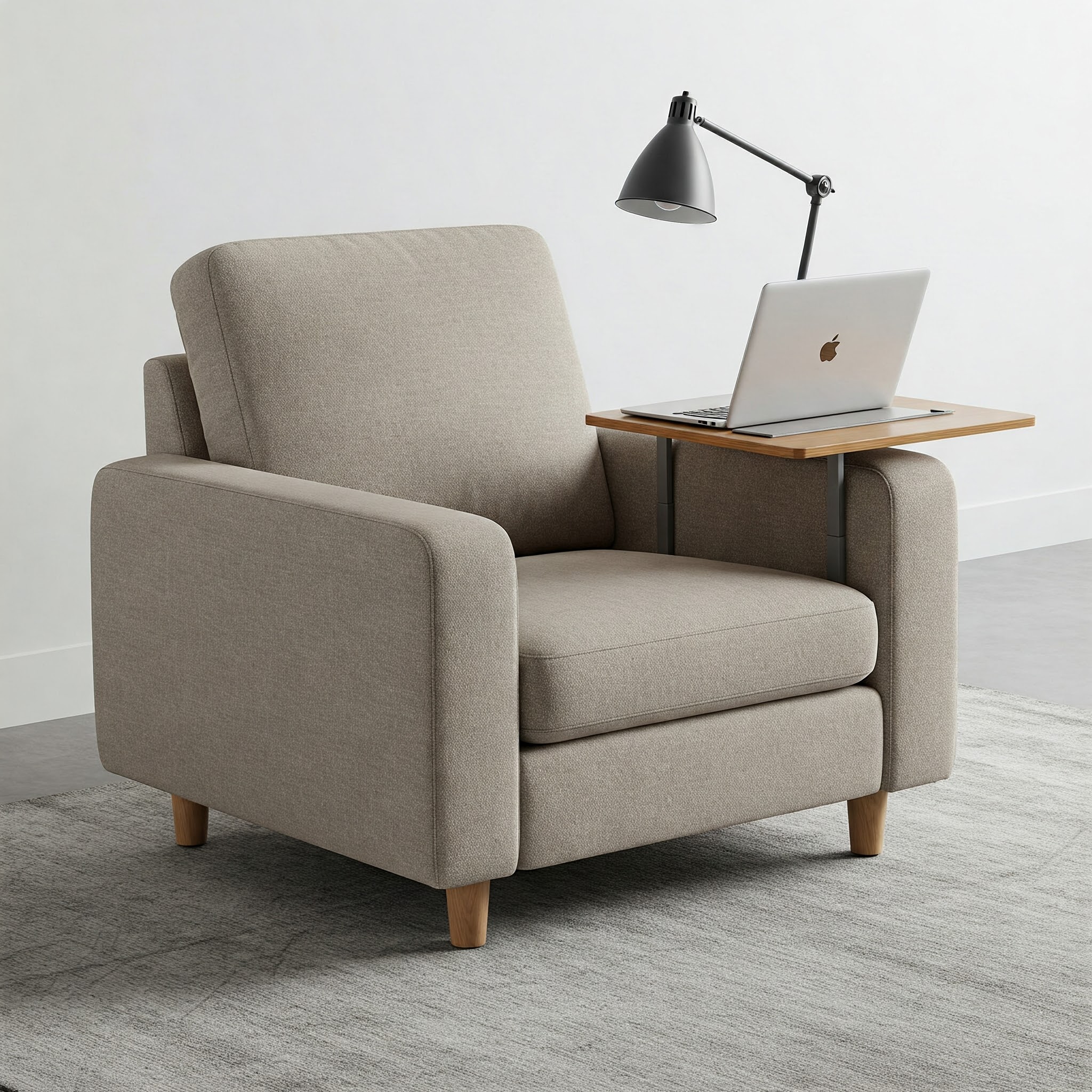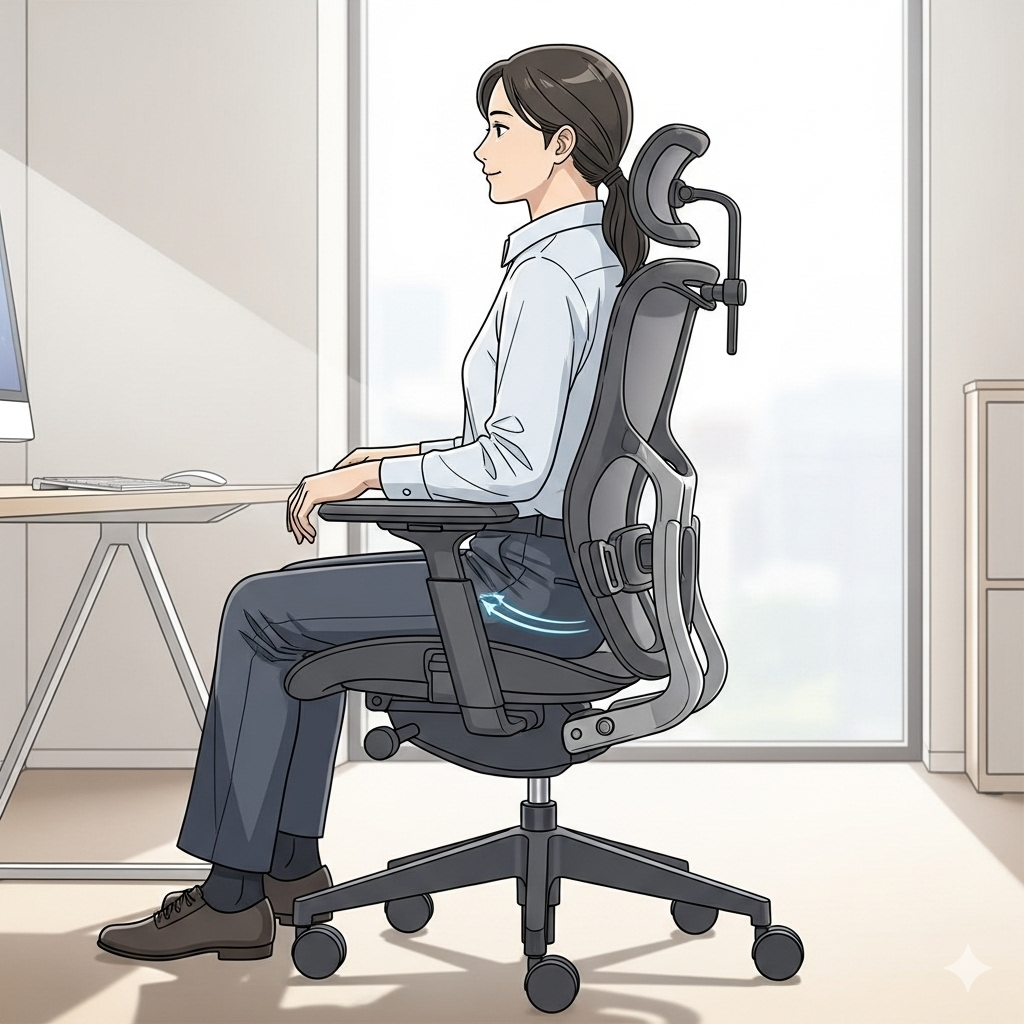Revolutionizing Your Workspace with Alternative Desk Chairs
Are you tired of ending each workday with an aching back and stiff shoulders? You’re not alone. The traditional office chair, while familiar, isn’t always the best solution for everyone’s comfort needs. Alternative desk chairs have surged in popularity as people recognize the importance of movement and proper positioning during long work hours. These innovative seating options can transform not only how you sit but also how you feel and perform throughout your day.
The search for alternative desk chairs has grown significantly as more Americans work from home and seek solutions that support both comfort and productivity. Whether you’re looking to address specific health concerns or simply want to upgrade your workspace, today’s market offers a diverse range of options designed to meet various needs and preferences.
In this comprehensive guide, we’ll explore the most effective alternative desk chairs available today, examining their benefits, drawbacks, and ideal use cases. By the end, you’ll have all the information you need to make an informed decision about which option might work best for your unique situation.
Why Consider Alternative Desk Chairs?
The Problems with Traditional Office Chairs ⚠️
Traditional office chairs, while familiar, often force our bodies into positions that aren’t natural or sustainable for extended periods. This can lead to:
✅ Poor posture and alignment issues
✅ Decreased blood circulation
✅ Muscle stiffness and fatigue
✅ Reduced focus and productivity
✅ Potential long-term health problems
The Benefits of Alternative Seating Options 🌟
Alternative desk chairs approach these problems from different angles, offering unique benefits:
✅ Promotion of active sitting and movement
✅ Better alignment of the spine
✅ Increased muscle engagement
✅ Improved blood flow
✅ Enhanced focus and energy levels
✅ Reduced pain and discomfort
Making the switch to an alternative desk chair isn’t just about following a trend—it’s about making a conscious choice to support your body’s natural needs and potentially improve your overall wellbeing.

10 Top Alternative Desk Chairs for Every Need
1. Ergonomic Kneeling Chairs 🧎
Kneeling chairs distribute your weight between your buttocks and knees, encouraging an open hip angle and better spinal alignment.
Key Benefits:
- Promotes natural spine curvature
- Reduces lower back pressure
- Strengthens core muscles
- Improves posture over time
The DRAGONN by VIVO Ergonomic Kneeling Chair has gained popularity for its sturdy construction and adjustable height, making it suitable for users of different sizes. With its thick cushioning and rolling wheels, it combines comfort with mobility, allowing you to move around your workspace easily.
Best For: Those with lower back pain or who want to strengthen core muscles while working.
Considerations: May cause knee discomfort for some users; typically not ideal for all-day use without alternating with other seating options.
2. Balance Ball Chairs 🏐
These chairs incorporate an exercise ball into a frame with back support, encouraging subtle movements that engage your core.
Key Benefits:
- Promotes active sitting
- Strengthens core muscles
- Improves balance
- Increases energy levels
The Gaiam Classic Balance Ball Chair stands out with its stable base and removable ball, offering versatility for both seating and exercise. Its supportive design makes the transition to active sitting more accessible for beginners.
Best For: Those looking to introduce more movement into their workday or strengthen their core.
Considerations: May lack adequate back support for some users; height is often not adjustable.
3. Saddle Chairs 🐎
Modeled after horseback riding saddles, these chairs position your body in a semi-standing position with open hip angles.
Key Benefits:
- Creates optimal hip angle
- Reduces pressure on tailbone
- Improves circulation to lower limbs
- Allows easy movement around workspace
The Salli SwingFit Saddle Chair features a split-seat design that reduces pressure on sensitive areas while promoting proper pelvic positioning. Its adjustable height and tilt make it highly customizable to different body types and desk heights.
Best For: Those who need to move frequently around their workspace or who experience tailbone pain with traditional chairs.
Considerations: Has a steeper learning curve; may feel unusual until you adapt to the position.
4. Standing Desk Stools 🧍
These provide support during standing desk use, allowing you to perch rather than fully sit.
Key Benefits:
- Supports transition between sitting and standing
- Reduces fatigue from standing all day
- Maintains active engagement
- Takes up minimal space
The Focal Upright Mogo Portable Stool offers a unique leaning position that keeps you in a semi-standing posture. Its portable design allows you to use it in various locations, making it ideal for those who work in different spaces throughout the day.
Best For: Standing desk users who need occasional support without fully sitting down.
Considerations: Limited back support; not ideal for extended periods of static sitting.
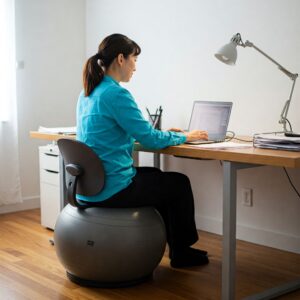
5. Wobble Stools 🔄
These stools feature an unstable base that allows for movement in all directions, keeping your body actively engaged.
Key Benefits:
- Encourages constant micro-movements
- Increases energy expenditure
- Engages core and leg muscles
- Improves focus through movement
The Uncaged Ergonomics Active Motion Stool combines height adjustability with a weighted base that allows controlled movement while maintaining stability. Its padded seat provides comfort during extended use periods.
Best For: Fidgeters who struggle to sit still; those looking to burn more calories while working.
Considerations: May cause fatigue for those not accustomed to active sitting; requires good balance.
6. Reclining Workstations ♨️
These integrate a reclining chair with an adjustable monitor and keyboard position.
Key Benefits:
- Reduces vertical pressure on spine
- Distributes weight more evenly
- Can alleviate certain types of back pain
- Often improves focus for some users
The Zero Gravity Workstation includes adjustable monitor arms and keyboard trays, allowing you to work in a reclined position that takes pressure off your spine. Its memory foam cushioning provides support while reducing pressure points.
Best For: Those with specific back conditions that make upright sitting painful; programmers or others who benefit from focused screen time.
Considerations: Takes up significant space; can be expensive; not ideal for collaborative work environments.
7. Leaning Stools 📐
These provide support in a semi-standing position, allowing you to lean rather than fully sit.
Key Benefits:
- Maintains partial weight-bearing on feet
- Opens hip angle
- Reduces pressure on lower back
- Easy to transition between sitting and standing
The Varichair Pro Leaning Stool features a padded seat with height adjustability, allowing you to find your optimal position between sitting and standing. Its stable base provides security while still allowing for natural movement.
Best For: Those who alternate between sitting and standing throughout the day; people who want to remain more active while working.
Considerations: Limited back support; may cause fatigue in legs for those not accustomed to the position.
8. Floor Sitting Options 🧘
These include floor cushions, low stools, and specially designed floor chairs that support proper posture while sitting on the ground.
Key Benefits:
- Encourages hip mobility
- Can improve posture when properly supported
- Offers connection to ground/earth
- Often more affordable than other options
The BackJoy SitSmart Floor Seat uses patented technology to automatically tilt your pelvis into an optimal position, engaging your core and supporting proper spinal alignment while sitting on the floor. Its lightweight design makes it portable for use in different settings.
Best For: Those interested in minimalist workspaces; people who already have good flexibility and core strength.
Considerations: May be challenging for those with limited mobility or joint issues; usually requires a low desk or lap desk for computer work.
9. Ergonomic Stools 🔧
These minimalist stools focus on proper pelvic positioning without the bulk of traditional office chairs.
Key Benefits:
- Promotes proper pelvic tilt
- Encourages active sitting
- Takes up minimal space
- Often highly portable
The Fully Stool uses a simple yet effective design that helps maintain your spine’s natural curve. Its height adjustability makes it compatible with various desk setups, while its minimalist aesthetic complements modern workspaces.
Best For: Those with space constraints; people who want an active sitting option without committing to more unusual designs.
Considerations: Limited back support; may cause fatigue for those not accustomed to active sitting.
10. Alternative Ergonomic Chairs 🪑
These are traditional-looking chairs with non-traditional ergonomic features.
Key Benefits:
- Familiar appearance but improved ergonomics
- Often highly adjustable
- Good transition option from conventional chairs
- Usually includes better lumbar support
The Herman Miller Sayl Chair stands out with its unique breathable suspension back that provides excellent support while maintaining flexibility. Its adjustable features and smaller footprint make it ideal for home offices where space may be limited.
Best For: Those who want improved ergonomics without radical change in sitting style; people transitioning from traditional office chairs.
Considerations: Still involves static sitting; requires proper adjustment to realize benefits fully.
Comparison: Finding Your Perfect Alternative Desk Chair
| Chair Type | Movement Level | Back Support | Price Range | Best For |
|---|---|---|---|---|
| Kneeling Chair | Moderate | Minimal | $80-300 | Lower back pain relief |
| Balance Ball Chair | High | Moderate | $70-150 | Core strengthening |
| Saddle Chair | Moderate | None | $200-500 | Hip mobility & circulation |
| Standing Desk Stool | High | None | $100-400 | Standing desk users |
| Wobble Stool | Very High | None | $80-300 | Fidgeters & active workers |
| Reclining Workstation | Low | Maximum | $1,000-3,000 | Specific back conditions |
| Leaning Stool | High | None | $200-400 | Sit-stand alternators |
| Floor Sitting | Moderate | Varies | $30-200 | Flexibility & minimalism |
| Ergonomic Stool | Moderate | Minimal | $100-300 | Space-constrained offices |
| Alternative Ergonomic Chair | Low | High | $300-1,500 | Traditional office transition |
Ready to transform your workday comfort? Check out these top-rated options on Amazon today and experience the difference a proper chair can make for your productivity and wellbeing!
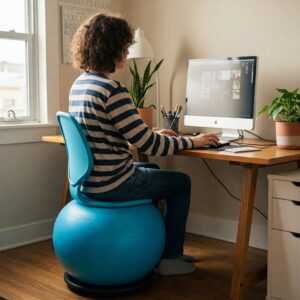
How to Choose the Right Alternative Desk Chair 🤔
Consider Your Specific Needs and Goals
Before investing in an alternative desk chair, ask yourself:
✅ What discomfort am I currently experiencing?
✅ Do I have any specific health concerns or conditions?
✅ How many hours per day will I be using this chair?
✅ What type of work do I primarily do?
✅ How much movement do I want/need throughout my day?
✅ What’s my budget for this investment?
Assess Your Workspace Constraints
Your physical workspace will influence which options are viable:
✅ How much space do you have available?
✅ What height is your desk, and is it adjustable?
✅ Do you need to move around your workspace frequently?
✅ Will you be sharing this chair with others?
✅ Do you need to store the chair when not in use?
Start Gradually
If you’re new to alternative desk chairs, consider:
✅ Starting with shorter periods (30-60 minutes)
✅ Alternating between your new chair and your existing one
✅ Giving yourself time to adapt (at least 1-2 weeks)
✅ Being mindful of new sensations vs. actual pain
✅ Making adjustments as needed
The Science Behind Alternative Desk Chairs 🔬
Movement and Health Connection
Research increasingly supports the idea that static positions—even “ergonomically correct” ones—aren’t ideal for long-term health. Our bodies are designed for movement, and many alternative desk chairs acknowledge this reality by encouraging:
- Micro-movements that keep muscles engaged
- Shifting positions to distribute pressure
- Improved circulation through active sitting
- Regular movement of joints to maintain mobility
A 2019 study published in the Journal of Physical Activity and Health found that participants using active sitting chairs increased their energy expenditure by up to 20% compared to traditional chairs, potentially contributing to better metabolic health over time.
Posture and Productivity
The connection between posture and cognitive function is also gaining scientific attention. When your body is properly aligned and supported:
- Breathing becomes easier and more efficient
- Blood flow to the brain improves
- Discomfort decreases, reducing distractions
- Energy levels remain more stable
A Cornell University study found that participants reported a 17% increase in task focus when using ergonomically optimized seating compared to conventional chairs.
Common Misconceptions About Alternative Desk Chairs 🚫
“They’re Just a Trend”
While some alternative desk chairs have certainly gained popularity recently, the principles behind them—movement, natural alignment, and personalized support—are based on long-standing ergonomic research. The focus on workspace wellness isn’t likely to disappear anytime soon.
“One Perfect Chair Exists”
There’s no single “best” alternative desk chair for everyone. Your ideal seating solution depends on your body, work habits, health needs, and personal preferences. Many ergonomics experts recommend having multiple seating options and changing positions throughout the day.
“They’re Only for People with Back Problems”
While alternative desk chairs can certainly help address existing pain or discomfort, they can also be preventative. Many users adopt these options to maintain their current health and prevent future issues rather than solving existing problems.
“They’re All Expensive”
While some premium options can indeed be costly, many affordable alternative desk chairs exist at various price points. Additionally, when considering cost, factor in potential savings from improved health, productivity, and avoiding future medical expenses.
Best Practices for Using Alternative Desk Chairs ✨
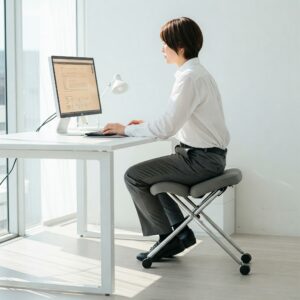
Proper Setup is Essential
Even the most ergonomic chair won’t provide its benefits if set up incorrectly:
✅ Follow manufacturer guidelines for assembly and adjustment
✅ Ensure your desk height complements your chair height
✅ Position your monitor at eye level
✅ Keep your keyboard and mouse at a comfortable height
✅ Adjust as needed throughout the day
Complement with Movement Breaks
No chair, no matter how well-designed, can replace the need for regular movement:
✅ Stand up at least once per hour
✅ Incorporate simple stretches throughout your day
✅ Consider a “movement snack” approach with brief activity bursts
✅ Stay hydrated (which naturally encourages standing breaks)
✅ Practice mindfulness about how your body feels
Create a Complete Ergonomic Workspace
Your chair is just one element of a healthy workspace:
✅ Use proper lighting to reduce eye strain
✅ Ensure adequate ventilation and comfortable temperature
✅ Organize frequently used items within easy reach
✅ Consider using a footrest if needed
✅ Implement proper cable management to avoid hazards
Real User Experiences with Alternative Desk Chairs 👥
Success Stories
“After years of chronic lower back pain, switching to a kneeling chair was life-changing. It took about two weeks to adjust, but now I can work pain-free for the first time in a decade.” – Michael K., Software Developer
“The balance ball chair helped me feel more energized throughout the day. I noticed I was no longer experiencing that 2 PM energy crash after switching.” – Samantha T., Marketing Manager
“As someone with ADHD, the wobble stool has been perfect for me. The ability to move constantly while working actually helps me focus better.” – David R., Graphic Designer
Adjustment Challenges
“The first week with my saddle chair was honestly uncomfortable. I almost returned it, but I’m glad I stuck with it. Now it’s the only chair I want to use.” – Jessica M., Accountant
“I had to learn to adjust my expectations. No single chair works for me all day long, so I now alternate between my ergonomic stool, standing, and my traditional chair.” – Robert H., Teacher
Tips for Transitioning to an Alternative Desk Chair 🔄
Take It Slow
Your body needs time to adapt to new positioning and muscle engagement:
✅ Start with 30-minute sessions
✅ Gradually increase duration as comfort allows
✅ Listen to your body’s feedback
✅ Expect some muscle fatigue initially
✅ Be patient with the adjustment period
Create a Mixed Seating Strategy
Many experts recommend a variety of positions throughout the day:
✅ Consider having 2-3 different seating options
✅ Schedule specific times to change positions
✅ Pair certain tasks with specific seating options
✅ Include standing time in your rotation
✅ Track which positions work best for different activities
Complement with Strengthening Exercises
Supporting muscles can help make the transition smoother:
✅ Focus on core-strengthening exercises
✅ Incorporate hip mobility work
✅ Don’t neglect upper back and shoulder strength
✅ Consider basic balance exercises
✅ Stretch regularly, especially hip flexors and hamstrings
Top Alternative Desk Chairs by Use Case
For All-Day Comfort:
The HAG Capisco Chair stands out for its unique saddle-like design that allows multiple sitting positions. Users consistently report the ability to use this chair comfortably for longer periods than other alternatives, thanks to its adaptability and thoughtful support.
For Budget-Conscious Shoppers:
The Gaiam Classic Balance Ball Chair offers an accessible entry point into active sitting at a fraction of the cost of many ergonomic options. Its simple design still delivers on the core benefits of movement and engagement.
For Small Spaces:
The Focal Mogo Stool has an impressively small footprint while still providing ergonomic benefits. Its portable design can be easily stored when not in use, making it ideal for apartment dwellers or shared workspaces.
For Maximum Movement:
The Fully Luna Standing Desk Stool encourages a full range of movement with its weighted base, allowing you to rock, tilt, and swivel freely while maintaining stability. This freedom of motion keeps energy levels high and muscles engaged.
For Traditional Office Environments:
The Herman Miller Embody Chair maintains a professional appearance while incorporating cutting-edge ergonomic features. Its sophisticated design blends into corporate settings while still providing significant health benefits over standard office chairs.
Maintaining Your Alternative Desk Chair 🧰
Regular Cleaning
Alternative desk chairs often have unique materials or mechanisms that require specific care:
✅ Follow manufacturer guidelines for cleaning
✅ Address spills immediately to prevent staining
✅ Use appropriate cleaners for your chair’s materials
✅ Pay special attention to crevices and adjustment mechanisms
✅ Consider occasional deep cleaning for fabric components
Routine Maintenance
Extending the life of your investment requires attention:
✅ Check and tighten screws regularly
✅ Lubricate moving parts as recommended
✅ Inspect gas cylinders or height adjustment mechanisms
✅ Replace worn parts promptly
✅ Keep wheels free of hair and debris

Conclusion: Finding Your Perfect Alternative Desk Chair
The world of alternative desk chairs offers exciting possibilities for transforming your work experience. By prioritizing movement, proper alignment, and your body’s unique needs, you can significantly impact your comfort, productivity, and long-term health.
Remember that the “perfect” chair varies from person to person and even from task to task. Many users find that a combination approach—alternating between different seating options throughout the day—provides the best results.
When selecting your alternative desk chair, consider your specific pain points, work habits, space constraints, and budget. Start gradually and give your body time to adapt to new positions and muscle engagements.
Investing in proper seating isn’t just about comfort—it’s a commitment to your overall wellbeing and professional performance. Your body was designed to move, and your workspace should support that fundamental need.
Ready to revolutionize your workspace comfort? Click on any of the recommended products above to see current pricing and availability on Amazon. Your back, neck, and future self will thank you!
More FQAs:
❓ What are the best alternative desk chairs for posture?
✅ Kneeling chairs, balance ball chairs, and saddle stools are top alternatives that promote better posture by encouraging active sitting and spinal alignment…
❓ Can alternative desk chairs reduce back pain?
✅ Yes, many alternative desk chairs support better ergonomics, which can help relieve lower back strain and improve comfort during long work sessions…
❓ Are balance ball chairs good for working at a desk?
✅ Balance ball chairs engage your core muscles while sitting, which can improve posture and focus—but they may lack back support for extended use…
❓ Do alternative desk chairs fit under standard desks?
✅ Most alternative desk chairs, including stools and kneeling chairs, are designed to fit under standard-height desks with no issue…
❓ Are standing desk stools considered alternative desk chairs?
✅ Yes, standing desk stools are a popular alternative that supports a semi-seated position, reducing fatigue while encouraging better posture and movement…
Recommended for You:
- Unique Office Chairs: 7 Extraordinary Options for Your Workspace in 2025
- Student Office Chair: 7 Best Options for Comfort and Productivity in 2025
- 10 Best Desk Chair for Short Person Options – Find Your Perfect Fit in 2025!
Disclaimer: This article contains affiliate links. If you purchase products through these links, we may earn a small commission at no additional cost to you.
